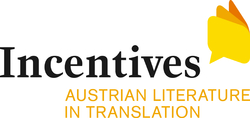- Das Haus
- Newsletter
- Service
- Publikationen
- Veranstaltungen
- NEU Livestream
- Ausstellungen
- Buchmagazin & AutorInnen
- AutorInnen
- AUFTRITTE
- Rezensionen Buch
- Rezensionen 2019
- Rezensionen 2018
- Rezensionen 2017
- Rezensionen 2016
- Rezensionen 2015
- Rezensionen 2014
- Rezensionen 2013
- Pressespiegel 2000-2010
- AutorInnen A
- AutorInnen B
- AutorInnen C
- AutorInnen D
- Autorinnen E
- AutorInnen F
- AutorInnen G
- AutorInnen H
- AutorInnen I
- AutorInnen J
- AutorInnen K
- AutorInnen L
- AutorInnen M
- AutorInnen N
- AutorInnen O
- AutorInnen P
- AutorInnen Q
- AutorInnen R
- AutorInnen S
- AutorInnen T
- AutorInnen U
- AutorInnen V
- AutorInnen W
- AutorInnen Z
- Incentives
- Rezensionen Sachbuch
- Verlage
- Dank an Verlage
- Impressum
- Bibliothek & Sammlungen
- Katalogsuche
- Partnerinstitutionen





FÖRDERGEBER
PARTNER/INNEN

 Herbert J. Wimmer: Tote im Text. Thriller – eine Irritation (Corpses in the Text. Thriller – A Vexation) Vienna: Sonderzahl Verlag, 2015. (Not) A Thriller as a Language Game Corpses in the Text. Thriller – A Vexation. Anyone who does not already know the author will be able to guess from the title that Herbert Wimmer's latest prose work is, as might be expected, not a detective novel at all. Rather, it is a linguistically reflective literary attempt to create a game with 'thriller' motifs which – while keeping all options open – persists with one essential element – that of vexation. The crime becomes the hook, as it were, that attracts the reader like a fish to other waters, which flow out into the ocean of language. Review by Birgit Schwaner,
|
| Veranstaltungen |
|
Junge LiteraturhausWerkstatt - online
Mi, 13.01.2021, 18.00–20.00 Uhr online-Schreibwerkstatt für 14- bis 20-Jährige Du schreibst und...
Grenzenlos? (Literaturedition Niederösterreich, 2020) - online
Do, 14.01.2021, 19.00 Uhr Buchpräsentation mit Lesungen Die Veranstaltung kann über den Live... |
| Ausstellung |
|
Claudia Bitter – Die Sprache der Dinge
14.09.2020 bis 25.02.2021 Seit rund 15 Jahren ist die Autorin Claudia Bitter auch bildnerisch... |
| Tipp |
|
LITERATUR FINDET STATT
Eigentlich hätte der jährlich erscheinende Katalog "DIE LITERATUR der österreichischen Kunst-,... |
|
OUT NOW flugschrift Nr. 33 von GERHARD RĂśHM
Die neue Ausgabe der flugschrift des in Wien geborenen Schriftstellers, Komponisten und bildenden... |